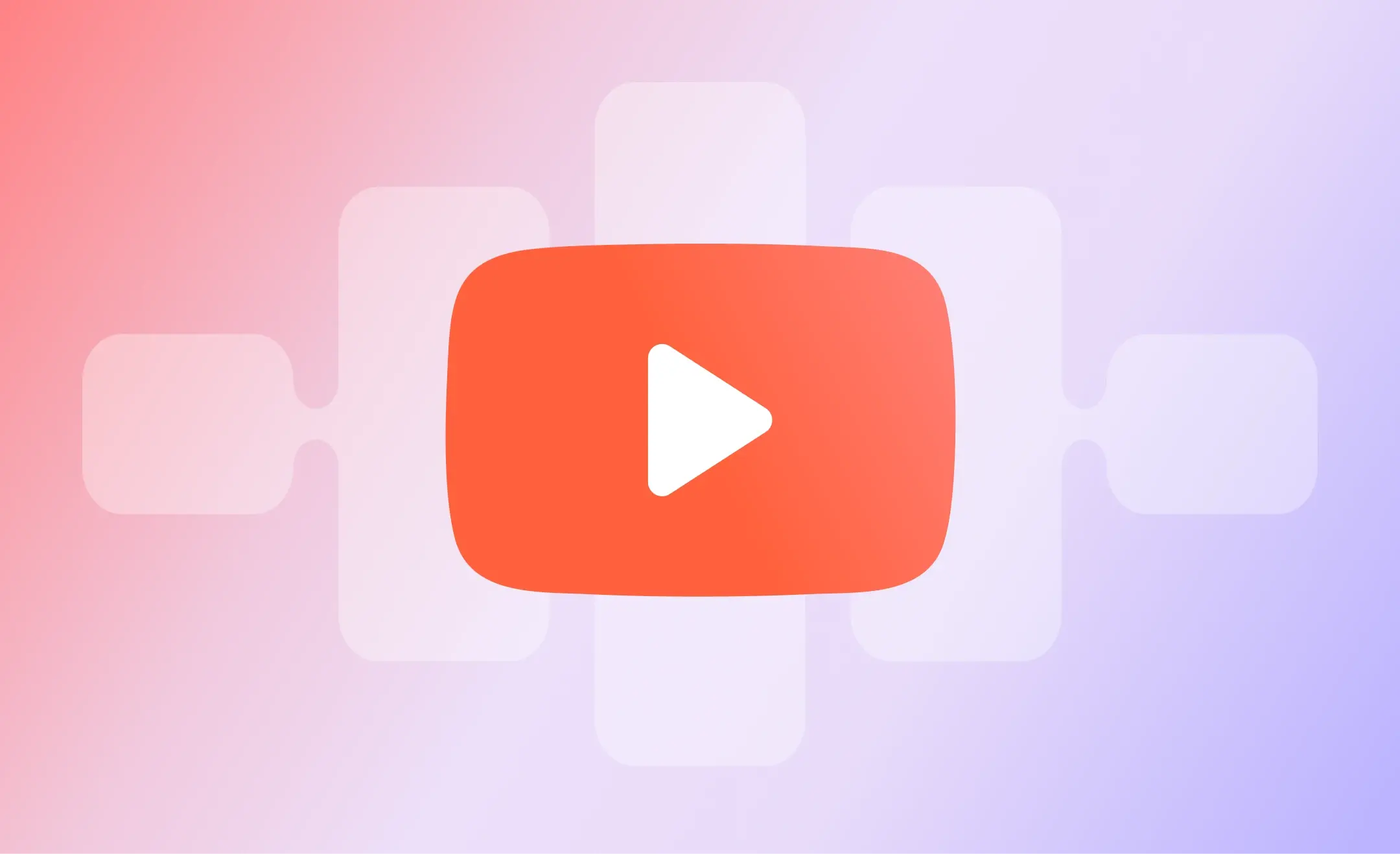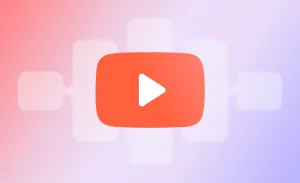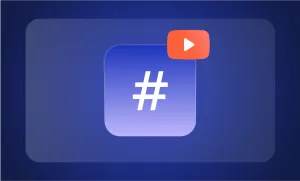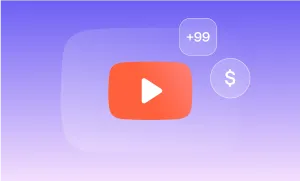Once upon a time, becoming a YouTuber was a pipe dream. Something kids talked about in classrooms. Today, all you need is a good smartphone, a niche interest, and an internet connection, and you’re good to go. Oh, and a good strategy.
Read on to discover how to become a YouTuber and make money from your videos.
Table of Contents
– How to become a YouTuber (checklist)
– What is a YouTuber?
– How hard is it to become a YouTuber?
– How can you make money from YouTube?
– How to become a successful YouTuber
– YouTube tips you wish you knew before starting
– Create YouTube content with Podcastle
How to become a YouTuber (checklist)
Here's the 9 steps you need to follow to become a successful YouTuber:
- Pick a niche
- Define your values
- Consider your audience
- Create your channel
- Get your setup sorted
- Start creating content
- Craft video titles and thumbnails
- Check out your analytics
- Monetize your channel
What is a YouTuber?
A YouTuber is an individual who shares video content on YouTube, the most popular video-sharing platform.
Sounds simple, right? Well, when people talk about ‘YouTubers,’ they’re typically referring to people who make part — if not all — of their income from regularly posting content to YouTube. Names that jump to mind tend to include creators who have been on the platform since the beginning, including Pewdiepie, Markiplier, and Zoella, to those topping the viewing charts today, such as MrBeast, the Paul brothers, and Emma Chamberlain.
However, the term ‘YouTubers’ also includes those who post as a side hustle and hobbyist creators.
How hard is it to become a YouTuber?
The internet provides countless opportunities to make money, but social media is a competitive space, and not everyone will become an overnight sensation.
That being said, putting in the hard work to consistently create quality content for an engaged audience makes becoming a successful YouTuber more than possible.
It may not be easy to become a famous YouTuber, but with the potential to earn millions of dollars each year, the hard work is worth it.
How can you make money from YouTube?
You need to be creating and uploading videos to YouTube consistently before you can be eligible to make money from YouTube. But more on that later. Here are four ways you can earn money as a YouTuber:
- Ad revenue: YouTubers with monetized channels can display companies’ ads on their videos, earning a portion of the revenue from Google AdSense.
- Sponsored content: If you’ve seen YouTubers promoting the likes of HelloFresh and Raid: Shadow Legends, you’ve watched sponsored content, which is when a YouTuber is paid by a brand to mention its product or service in a video.
- Merchandise sales: Once you’ve built an audience, you can sell branded items like T-shirts via your channel’s shop.
- YouTube Premium: YouTubers get a share of revenue brought in by Premium subscriptions when their content is watched by Premium subscribers.
How to become a successful YouTuber
Ready to learn how to become a popular YouTuber? Let’s break the process down into nine steps.
1) Pick a niche
The great thing about YouTube is that there’s something for everyone, from family vlogging channels sharing parenting advice to make-up gurus showing you how to perfect your contour.
Picking a niche means finding a topic that interests you and that you can create content around consistently. Ideally, there will be as few people as possible in your niche, increasing your chances of attracting a viewership.
A great example of finding an untapped niche is Bailey Sarian, who combined true crime with makeup to create her popular Murder Mystery & Makeup series.
Psst... Wondering how to become a gaming YouTuber?
Gaming is a popular genre on YouTube. Within gaming, there are tonnes of subgenres to tap into, from making Let’s Play content to reviewing cozy games.
2) Define your values
Defining your values or finding your ‘why’ means identifying what your channel will stand for.
Are you all about making people laugh? Do you want to be seen as an expert in your field? Do you want to help people? Is your goal to educate your viewers? Understanding what your purpose is will make it easier to keep your content consistent.
3) Consider your audience
Without a dedicated audience, you can’t make money from YouTube. So, it’s important you consider who you’re creating for — not just what you’re creating.
Ask yourself what type of person is most likely to watch (and enjoy) your videos. What’s their job? Their personality? Their age? By imagining your ideal viewer, you will find it easier to create content that’s relevant to this audience.
For example, compare Tiffanyferg’s calm, down-to-earth demeanor while delivering internet culture commentary for a Gen Z/ millennial audience to Ryan’s World’s upbeat and colorful content aimed at children.
4) Create your channel
Now comes the not-so-fun part — the admin. Here’s how to create a YouTube channel:
- Decide your channel name
- Create your logo and banner image. For bonus points, select a color scheme that appeals to your audience and matches your content genre
- Create a Google account
- Create a YouTube account
- Populate your channel page with the content above and a channel description
5) Get your setup sorted
You don’t need fancy equipment to get started, just your smartphone. With a well-lit room (natural light is ideal, but a ring light can do in a pinch), a great background, and your phone, you’re ready to go.
As your viewership grows, you’ll want to upgrade your setup to include a high-tech video camera, lights, and a microphone to increase your content’s quality.
6) Start creating content
Lights, camera, action! Now comes the time to create. Once you’ve scripted and filmed your videos, you need great editing software to prepare your content for publication.
Did you know you can transform podcasts into YouTube videos? If you’re already a podcaster, why not expand your reach by filming your recording, editing the content, and uploading it to YouTube?
7) Craft video titles and thumbnails
Creating great thumbnails is a skill. These should grab your target audience’s attention when they’re scrolling through YouTube’s homepage and clearly communicate what type of content you’re creating.
Commentary creator Mike’s Mic does a great job of communicating his subject matter and sense of humor through his thumbnails and video titles.
8) Check out your analytics
While it's important to stay consistent with your defined niche and audience, your analytics can help guide you along the way.
Make sure to try different video lengths, formats, and approaches and monitor the results via YouTube Analytics. This will reveal what works for your channel and what doesn’t.
9) Monetize your channel
If you want to make money from your YouTube videos, you need to set up an AdSense account.
You can join the YouTube Partner Program once you’ve reached 1,000 subscribers. To be eligible, you need to have amassed at least 4,000 watch hours in the previous 12 months.
As a Partner, you gain access to a range of monetization features. Monetization opportunities include ad revenue, YouTube Premium revenue, channel memberships, a channel shop, and premium live chat payments, with access to each depending on your viewership.
YouTube tips you wish you knew before starting
If you’re just getting started on YouTube, there’s a lot you don’t know until you’ve made the mistakes yourself. But you don’t have to learn everything the hard way.
These are the tips most creators wish they knew before uploading their first video (the kind of advice that could save you months of guessing, stressing, or stalling.)
1. Your title and thumbnail matter more than your video.
You can make the most helpful video in your niche. But if no one clicks, it doesn’t matter. Before you hit “record,” brainstorm at least 3 clickable title ideas and thumbnail concepts. Treat them like marketing assets, not afterthoughts.
2. Don’t chase perfection
Your first 10–20 videos won’t look the way you want them to. That’s normal. The creators you admire only got good by uploading, analyzing, and iterating. Focus on improving one thing per video: audio, pacing, lighting, editing, or structure.
3. Watch time is everything
YouTube cares less about views and more about how long people stay. Use hooks in the first 15 seconds, tease what’s coming, and cut the fluff. Every second needs a reason to stay. If you wouldn’t watch your own intro, your audience won’t either.
4. Batching saves your sanity
Trying to write, film, edit, and upload on the same day is a fast track to burnout. Create in chunks: script 3 videos in one go, film them back-to-back, then edit during a separate block. This gives you space to think and a buffer for off weeks.
5. You need a system before you need gear
A clear workflow beats expensive equipment. Start with whatever camera you have, free editing software, and a checklist that keeps you consistent. Fancy mics won’t fix poor planning or inconsistent uploads.
6. Community > viral hits
Going viral might grow your numbers, but it won’t build loyalty. Talk to your viewers. Pin comments. Ask questions in your videos. Reply with care. A small, engaged audience is more powerful than a big one that never returns.
7. You won’t grow if you don’t study what works
Look at your analytics weekly. What videos had the best click-through rate? What made people drop off? What thumbnails converted better? Copy your own success before trying something new.
8. Niche down faster
General content grows slow. Focus on one topic, one audience, and one core promise. Become the go-to channel for a specific type of person, that’s what triggers YouTube’s algorithm to push your content.
Create YouTube content with Podcastle
Starting your YouTube journey is all about momentum, and the less friction in your process, the easier it is to stay consistent. That’s where Podcastle comes in, a browser-based content creation suite where you can record, edit, and publish all at once, and with powerful AI tools to instantly enhance video footage and audio recordings.
And say you need to record voiceovers, clean up your audio, transcribe your scripts, or turn raw ideas into polished content, Podcastle gives you a full creative toolkit for every use case.
If you’re ready to post that first video or level up your next one, let Podcastle be the place you build it.








